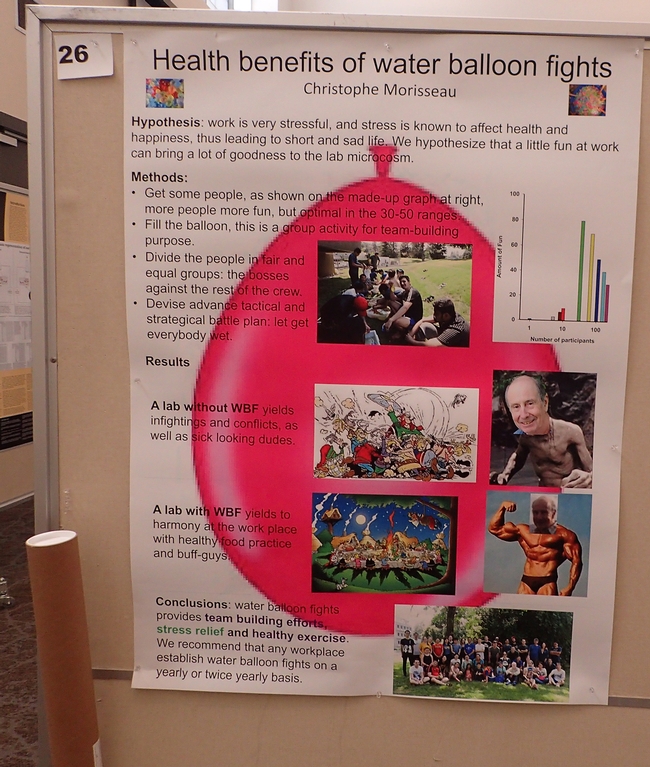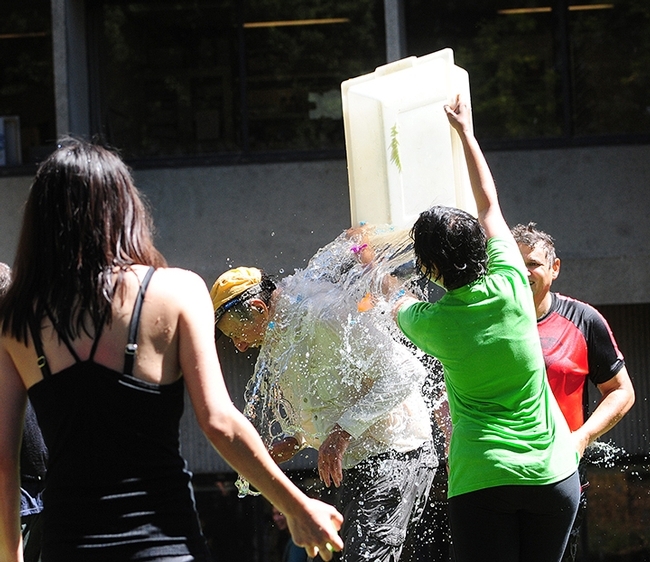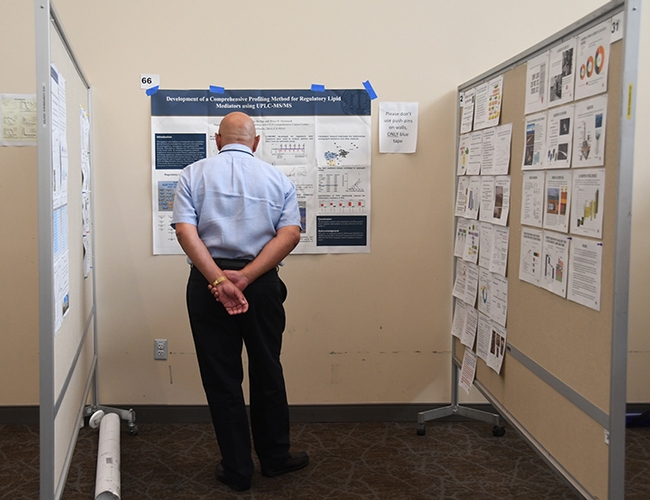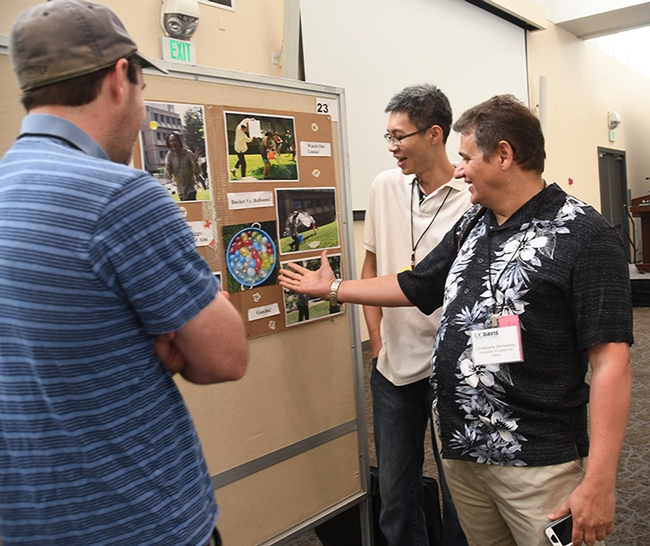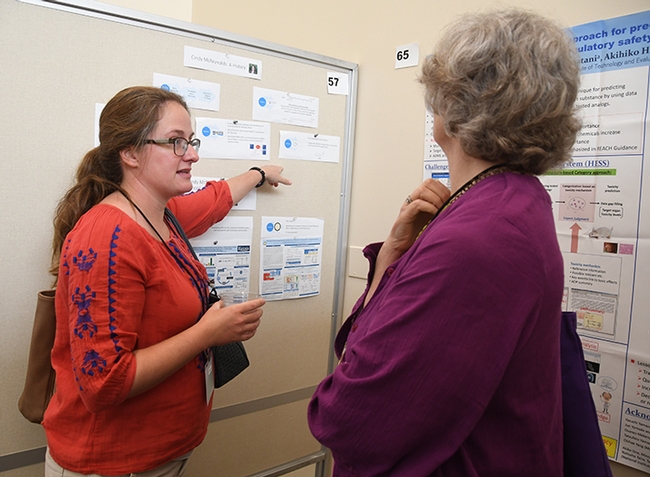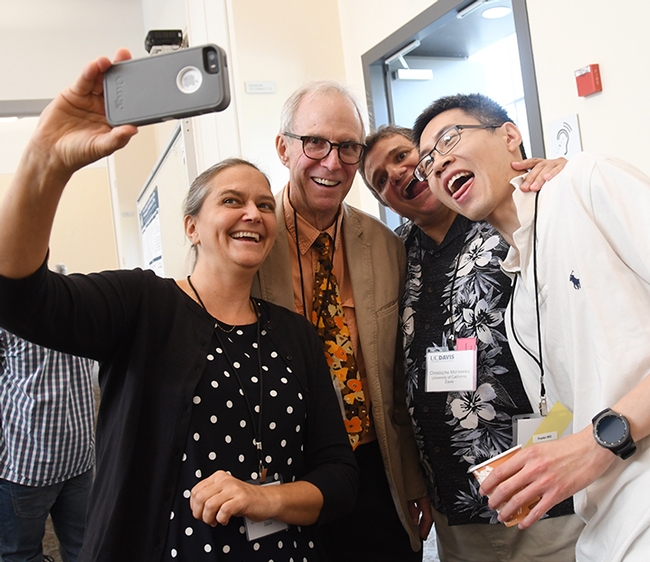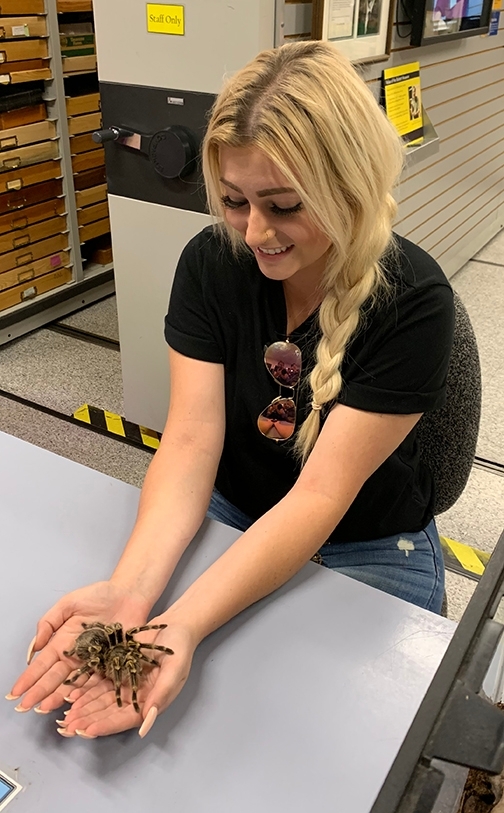- Author: Kathy Keatley Garvey
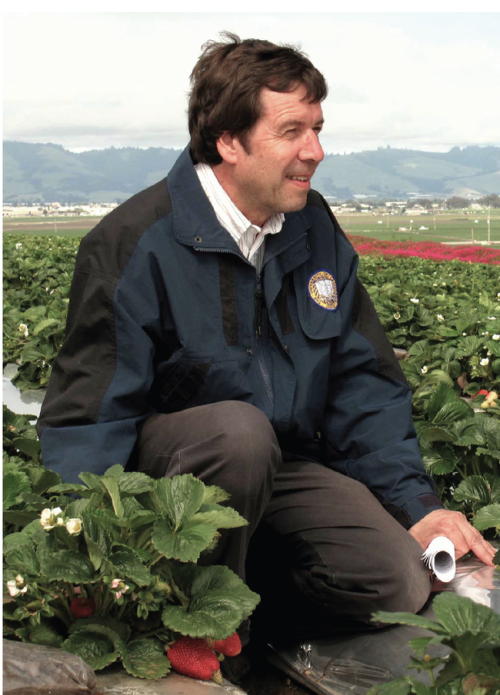
His name is synonymous with integrated pest management (IPM) and his achievements during his 45-year career are nothing short of spectacular.
So it's no surprise that UC Davis distinguished professor emeritus Frank Zalom, internationally recognized for his IPM expertise and leadership, is the recipient of a Lifetime IPM Achievement Award from the California Department of Pesticide Regulation (CDPR).
Zalom, a member of the UC Davis Department of Entomology and Nematology faculty, and formerly, the 16-year director of the UC Statewide IPM Program, will be honored at CDPR's IPM Achievement Awards virtual ceremony at 1:30 p.m., Thursday, Feb. 29. Four other individuals or organizations also will receive the 2023 awards. (Register here to access the Zoom ceremony.)
CDPR praised Zalom for “advancing IPM practices in California specialty crops as a preeminent researcher, practitioner and champion of sustainable pest management.”
The Lifetime IPM Achievement Award recognizes individuals with 20 or more years of research, professional practice, or outreach in IPM-related sectors.
“Dr. Zalom's work has contributed greatly to advancing safe, effective, and sustainable IPM practices in specialty crops such as almonds, strawberries, tomatoes, and olives,” a CDPR spokesman said. “Through hundreds of presentations and publications, Dr. Zalom has contributed to broad adoption of IPM practices for numerous agricultural pests, resulting in less insecticide use and reduced run-off impacts and high-risk pesticide exposures.”
Zalom officially retired in 2018 but continues his IPM research and outreach efforts as a recall professor in the Department of Entomology and Nematology. He also serves as advisor to the California Department of Food and Agriculture's (CDFA) Office of Pesticide Consultation and Analysis, and a science advisor for the U.S. Department of Agriculture's National Institute of Food and Agriculture.
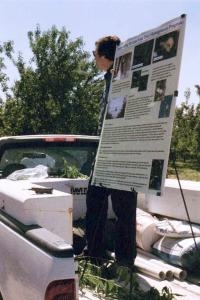
Zalom is known for his “tireless advocacy for IPM as THE way to address pest concerns in a sustainable, economical and environmentally acceptable manner.” His peers describe his approach to IPM as “progressive, not dogmatic, integrating the economical and judicious use of crop protection products while promoting effective, biologically based pest management alternatives.”
“The overarching objective of my research program can best be described as the pursuit of knowledge that advances the science and use of integrated pest management,” Zalom said. Although he initially worked on rice, cotton and alfalfa, he turned his primary focus to California specialty crops including tree crops (almonds, olives, prunes, peaches), small fruits (grapes, strawberries, caneberries), and fruiting vegetables (example, tomatoes).
Zalom developed IPM strategies and tactics within the context of these systems that included monitoring procedures, thresholds, pest development and population models, biological controls, and use of less toxic pesticides, many of which are incorporated into UC IPM Guidelines for these crops (see https://ipm.ucanr.edu/agriculture/) and have become standard practice. He pursues his goals through a combination of fundamental studies linked to pest biology, physiology, and community ecology.
Overall, Zalom engages in what he calls "problem-focused, hypothesis-driven research that focuses on understanding the biology of the pest species that eventually results in economically viable IPM management approaches that reduce the amount of undesirable insecticides being used in crop production."
Zalom says he considers himself "a problem-solver who consults with fellow scientists, researchers, horticulturists, students, visiting scholars, extension educators, growers, pest control advisers, environmental groups, and public agencies--listening to their requests and concerns, before proposing and implementing the best IPM solutions to pest problems."
See more about our UC Davis doctoral alumnus extraordinaire and his IPM achievements.
Update:
- Full Ceremony: https://youtu.be/XEMKD04bDT4
- Video honoring Frank Zalom: https://youtu.be/oXc8OcQivLI
- Remarks from Assembly member Cecilia Aguiar-Curry: https://youtu.be/o4xnXyPn7e8
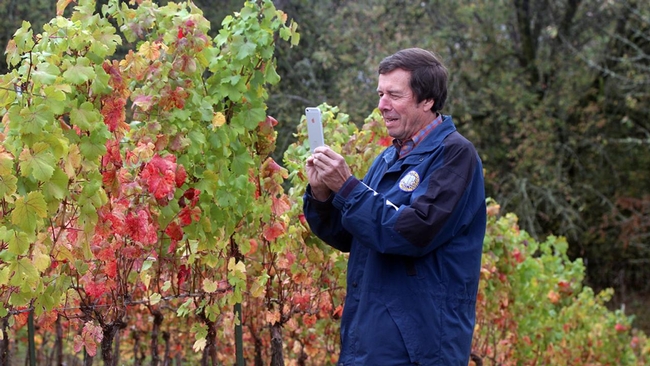
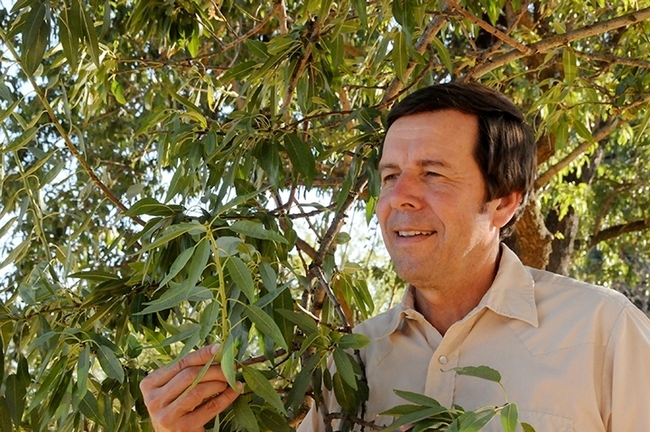
- Author: Kathy Keatley Garvey
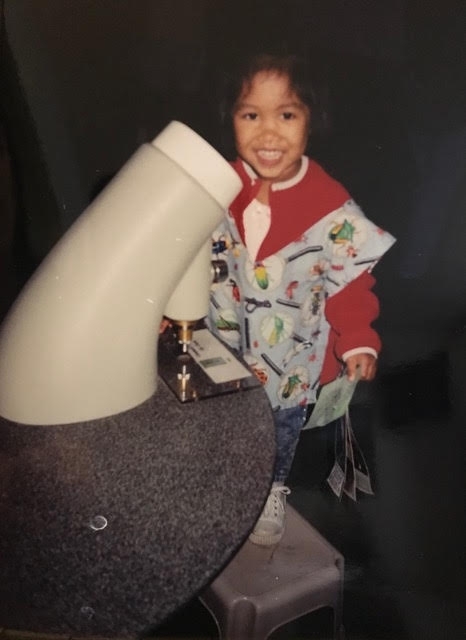
"Ento-what?" some folks will ask. "What's that?"
Five-year-old Rebecca Jean "RJ" Millena could have told you.
She still can.
When she entered kindergarten in Concord, Calif., RJ penciled this on her "About Me" poster: "When I grow up, I want to be an entomologist."
To the amazement of her teacher and classmates, she even knew how to spell the five-syllable word referring to "the scientific study of insects."
Fast forward to today. She's 22, a senior majoring in entomology at the University of California, Davis, and an outstanding student researcher in the laboratory of UC Davis Distinguished Professor Jay Rosenheim of the Department of Entomology and Nematology.
And she's just accepted a four-year, full-ride fellowship offer to complete a doctoral program at the American Museum of Natural History. She will join the systematics laboratory of Dr. Jessica Ware after receiving her bachelor's degree from UC Davis in June.
In 2019, RJ was one of four UC Davis undergraduates selected for a two-year funded research career with the University of California Leadership Excellence through Advanced Degrees (UC LEADS) program, which prepares promising students for advanced education in science, technology, mathematics and engineering (STEM). The UC LEADS scholars embark upon a two-year program of scientific research and graduate school preparation.
Guided by Rosenheim, RJ launched her independent research project on those bizarre Strepsiptera endoparasites that attack their hosts, the Ammophila (thread-waisted) wasps.
RJ says that “being able to work with Jay on this project investigating the host-parasite relationship between Ammophila wasps and Strepsiptera was what made me fall in love with this super weird order of endoparasites." As larvae, members of the order Strepsiptera, known as “twisted wings,” enter their hosts, including wasps and bees, through joints or sutures.
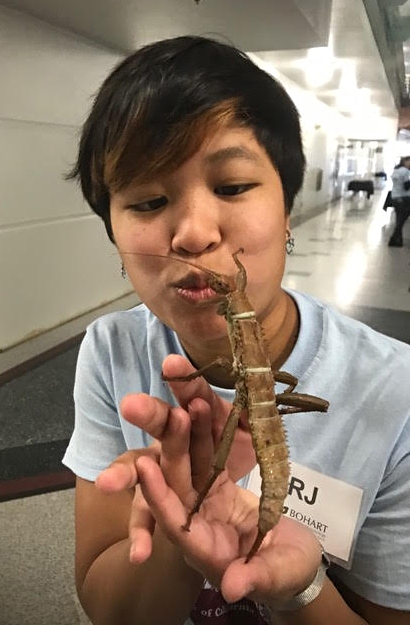
Over a two-year period, she studied thousands of specimens at the Bohart Museum of Entomology. The UC Davis insect museum houses a worldwide collection of eight million specimens, including “about 30,000 specimens of Ammophila from multiple continents,” says director Lynn Kimsey, UC Davis professor of entomology. Global wasp authority and UC Davis doctoral alumnus Arnold Menke, author of the book, The Ammophila of North and Central America (Hymenoptera, Sphecidae), identified most of the Ammophila specimens in the Bohart Museum. His book is considered "the bible" of Ammophila research.
RJ went on to enter a poster, “Parental Care and the Risk of Maternally Vectored Pathogens: Ammophila Transmit Strepsipteran Parasites to Their Young,” in the March 2021 Koret UC LEADS Symposium poster competition and won top honors.
A dean's honor student with multiple interests, RJ plays French horn and trumpet in the UC Davis Video Game Orchestra. She performed two years with the California Aggie Marching Band-Uh. In her Davis apartment she tends to a colony of Madagascar hissing cockroaches, a scorpion, a tarantula, a tailless whip scorpion, and an African cat-eye mantis. “Over the last four years at UC Davis, I've had a colony of millipedes, two other tarantulas, a giant Vietnamese centipede, and five other assorted mantis species. The five-year-old me would also be thrilled about that.”
But back to what children want to be when they grow up. Usually they say cowboy, truck driver, cook, teacher, dancer, actor, musician, artist, athlete, firefighter, detective, writer, police officer, astronaut, pilot, veterinarian, lawyer, doctor and the like.
But rarely "entomologist."
RJ's highly contagious enthusiasm toward the scientific study of insects serves as a definite role model to young girls aspiring to careers in STEM. Women make up only 28 percent of the workforce in STEM, according to the American Association of University Women. RJ is closing the gender gap.
'I Wanna Be an Entomologist'
Back in 2011, we were delighted to see UC Davis Regents Scholar Heather Wilson, a researcher/lab technician in the Frank Zalom laboratory, UC Davis Department of Entomology and Nematology, create a fun-filled, innovative video, "I Wanna Be an Entomologist," a take-off of "I Wanna Be a Billionaire" from Travie McCoy's Lazarus album.
Heather entered her project in an Entomological Society of America (ESA) contest and won honorable mention.
In her video, she runs with an insect net, counts bugs in the Zalom lab, watches bees in a hive, and visits the Bohart Museum. At the Bohart, she hugs a display of butterflies and cradles a rose-haired tarantula and Madagascar hissing cockroach from its live "petting zoo."
"I wanna be an entomologist, so freakin' bad," Wilson sings. "I wanna be on the cover of Economic Entomology, smiling next to Frank and Jim Carey..."
"Frank and Jim" are Frank Zalom and James R. Carey, UC Davis distinguished professors in the Department of Entomology and Nematology. Zalom is a past president of the 7000-member ESA, and both were selected ESA Fellows.
Watch Heather Wilson's video at https://youtu.be/rwNbbJgXNXA and you'll probably decide being an entomologist sounds much more fun than being a billionaire. Who wants to be a billionaire, anyway? Let's go check out the insects!
The entomology line forms over there...don't crowd and don't cut in.
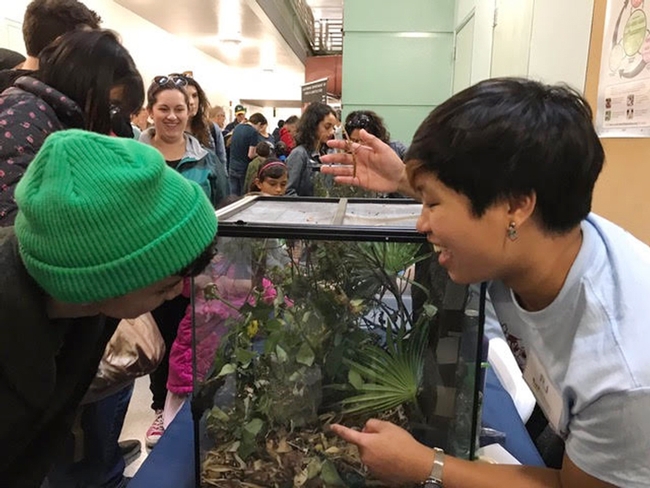
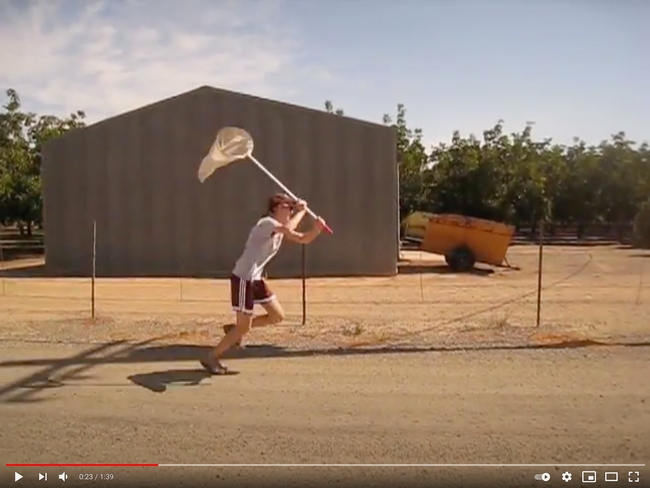
- Author: Kathy Keatley Garvey

It's not enough for entomologists to do research; they must also embrace and integrate technology, says agricultural entomologist Christian Nansen, an associate professor in the UC Davis Department of Entomology and Nematology, who keynoted a virtual meeting of the 47th Congress of the Colombian Entomology Society, themed "Frontiers in Entomology."
Technology plays a crucial role in the development of insect science--and entomologists, their students and society must embrace it, said Nansen. He delivered his keynote address in three parts: Parts 1-3 and Final Thoughts. They are now available on his website (http://chrnansen.wix.com/nansen2) as YouTube videos.
"I argue that, in the near future, we as university professors may have to look beyond publication of results in a research article--that students and society will likely demand more from us," Nansen said. "We can embrace and integrate technologies into what we do to create educational platforms, which include exposure to technologies and therefore enable students to acquire highly 'marketable' career skill sets. We can integrate discussions about entrepreneurship into our research and education--demonstrate to funding bodies, colleagues, and students that we take development and adoption of science-driven solutions seriously."
In his three-part lecture, Nansen provides examples of his research and approaches to university education.
"The lecture," he explains, "describes three elements in my program: optical sensing to diagnose insects, smartphone app development, and use of insect mass-rearing to biodegrade waste streams. Applied research, technology, innovation, and entrepreneurship are the denominators tying these three elements together."
In addition to insect ecology and remote sensing, Nansen's research interests include integrated pest management, host plant stress detection, host selection by arthropods, pesticide performance, and use of reflectance-based imaging in a wide range of research applications.
The three-part lecture:
- Introduction
- Part One: Optical or Remote Sensing
- Part Two: Smartphone App Development and Pesticide Sprays
- Part Three: Breeding of Insects to Bioconverte Waste
- Final Thoughts
Born and educated in Denmark, Nansen received his master's degree in biology from the University of Copenhagen in 1995 and his doctorate in zoology from the Royal Veterinary and Agricultural University in Denmark in 2000. He accepted positions in Portugal, Benin, United States, UK and Australia before joining the UC Davis Department of Entomology and Nematology in 2015 as an assistant professor. His international experience also includes being an international exchange student at the University of Lisbon, Portugal and a visiting professor at Northwest A&F University, Yangling, China.
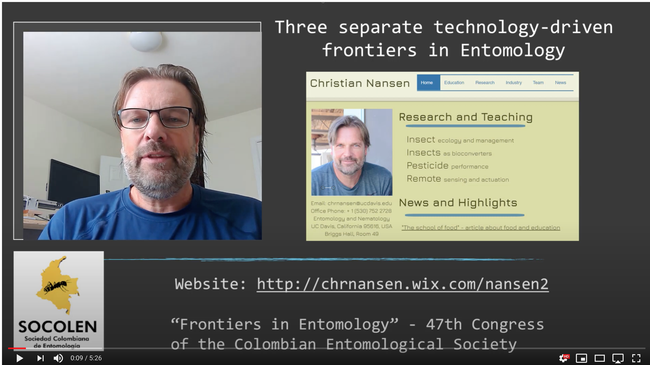
- Author: Kathy Keatley Garvey
Andrea Guggenbickler, staff academic advisor for the Global Disease Biology (GBD) major, part of the UC Davis Department of Plant Pathology, has received a prestigious award for her outstanding advising.
The 2020 Eleanor and Harry Walker Academic Advising Awards program, College of Agricultural and Environmental Sciences (CA&ES), selected her for the staff academic advisor award.
Guggenbickler coordinates a 400-student program that includes course scheduling, faculty and instructional reports, statistical analysis of the major, and individual advising sessions.
“Andrea has made such a positive impact on student success in the GDB major,” said Susan Ebeler, CA&ES associate dean for undergraduate academic programs. "She has created innovative materials for incoming GDB students to support their remote advising experience and she is dedicated to student welfare and ensuring that the basic needs of every student are met.”
Nominator David Rizzo, professor and chair of the Department of Plant Pathology, described Andrea “as a huge part of the development of the relatively new Global Disease Biology major at UC Davis. Since becoming a GDB major, she has played many different roles in the major.”
And “all with her trademark enthusiasm,” he added.
The story behind the story....as a student majoring in GDB from 2014 to 2018 at UC Davis, Andrea appreciated the “incredible support” she received from then staff academic advisor Brandy Fleming. Now, in a scenario turned full circle, Andea is drawing appreciation from students and faculty for her own “incredible support.”
“Although she has been a staff advisor for a only a short period of time (since June 2019), Andrea has had a tremendous impact on the major,” wrote Rizzo in his nomination letter. Praising her leadership, dedication, communication skills and problem-solving expertise, he characterized her as a “truly a caring advisor” and someone with “an excellent sense of the needs of our students in order for them to be successful in the major.”
The Walker Academic Advising Awards recognize faculty, staff, and peer advisors who have demonstrated excellence and innovation in academic advising for CA&ES academic programs. The 2020 recipients also include Jim Fadel, faculty master advisor, Department of Animal Science and Management; and Kiara Cuevas, peer advisor for Agricultural and Environmental Education, Animal Science, and Animal Science and Management.
"It's so nice to see our hardworking advisors being recognized college-wide,” said Nora Orozco, chief administrative officer serving both departments. Last year Elvira Galvan Hack, staff advisor for animal biology (ABI), received the Walker staff award and forensic entomologist Robert Kimsey received the faculty master advisor award. They went on to win regional and international advising awards from NACADA, the global community for academic advising.
Andrea formerly served as an academic advising assistant to the animal biology and entomology majors, both housed in the Department of Entomology and Nematology.
“I've always believed in the power of advising,” said Guggenbickler, who received her bachelor's degree from UC Davis in 2018. “When I first met with the GDB advisor, Brandy Fleming (now an undergraduate academic advisor supporting majors in economics, history, and East Asian studies), she helped support me and my education in incredible ways. Since then, I've wanted to do the same thing for others. As a (student) peer advisor, I was able to connect with students based on shared experiences, which has been extremely valuable in my current position as well. Now, as a staff advisor I've tried to use my position to be a constant advocate for the students. I do my best to always put their needs first, and to do whatever I can to help students in difficult situations.”
“One of the main ways I've tried to make a difference in our advising center is to create our student pantry,” Andrea said. “We provide healthy, easily accessible, snacks and on-the-go food and drinks for students. Food insecurity can be a huge issue for students, and we have done our best to mitigate that barrier for them. The pantry is open to everyone, and we have gotten some really great feedback from students who have said that it has really helped them. Getting that feedback and tangibly making a difference has been by far one of the most rewarding parts of my job.”
Her favorite part of being an advisor? “Watching students succeed. I've been with the program in some capacity since 2017, so I've seen a lot of students come through the office. I make an effort to meet with every student at least once per year, and it is amazing seeing them grow, conquer obstacles, excel in coursework, graduate, and move on to their next adventure.”
“Advisors have a really unique opportunity to touch a lot of lives in a meaningful way,” Andrea said. “I can only hope that in my time as an advisor at UC Davis that I've been able to create a positive change in the lives of others the same way that my students have made a positive change in my life. As I move on to my next adventure as a master of public health student I will take with me the lessons my students have taught me: the importance of equity, advocacy, belief in oneself, and perseverance. I am thankful to the advising community in the College of Ag for creating a space in which advisors are able to make a difference for students while also growing themselves.”
Andrea grew up in Ferndale, Humboldt County, and now lives in Woodland with her fiancé, Tyler Baum, an associate veterinarian at Broadway Veterinary Hospital, Sacramento. Baum, a “double” UC Davis alumnus, holds a bachelor's degree in animal science and a DVM from the School of Veterinary Medicine. They share their home with three UC Davis-connected cats: “Butters,” “Toast” and “Dr. Professor Stripey Pants.”
"We got Butters and Stripey (they are brothers) from the Orphan Kitten Project run through the Vet School," she said, "and we got Toast from a shelter when Tyler did a shelter medicine rotation--and he fell in love with her and brought her home."
The couple purposely selected "breakfast names" for Butters, a light orange tabby and Toast, a black and white feline, but they couldn't bear to change the name of Dr. Professor Stripey Pants, a gray tabby ("it was too perfect").
Her career plans? “My career plans are to complete my master's degree in public health, and hopefully pursue my Ph.D in public health. After that I would love to dive into public health research and advocacy for women and minority health. Ideally, in the future, I would like to do some teaching at the collegiate level.”
Rizzo says that GDB is now the fifth largest major in the CA&ES, but it still maintains the “small-college” feel. Among Andrea's many accomplishments: modifying and expanding the department's professional development modules. “Over the holiday break, she developed a series of orientation modules (seven in total) within Canvas,” he wrote. “All in all, the whole project is amazing. And it was done without dropping the ball with any of her traditional advising.”
As a facilitator with First-Year Aggie Connections, Guggenbickler mentors students as they navigate their first-year experience. She created a 10-week course on professional development that encompasses such topics as “how to read a scientific paper” and “how to create a resume.”
In a group letter, GDB students Austin Dalmasso, Bianca Arao and Brandon Nguyen, all who worked as either peer mentors or peer advisors, praised her dedication and accomplishments.
“As the academic advisor, she communicates efficiently with students when they need to speak to her regarding urgent or sensitive circumstances, and when she is with students, she is attentive and sensible to any situations that may need care beyond her scope,” they wrote. “Andrea cares about her students and wants to equip them for success in their future endeavors.”
“Throughout all of the responsibilities that govern an academic advisor's role, Andrea is always looking for novel ways to improve student advising,” they wrote. “As students, we look back on our own informative orientations, and praise Andrea for making this year's orientation user-friendly.”
“From the countless interactions we have shared with Andrea, we are grateful that she always puts it upon herself to be an open crisis line. Andrea is genuinely supportive of our successes as students, and continues to be a comforting figure we greatly appreciate. It is Andrea's nurturing character that we want to honor and showcase to the UC Davis community.”
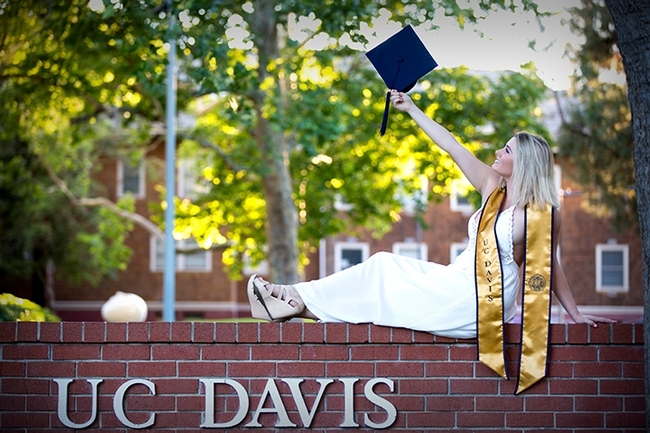
- Author: Kathy Keatley Garvey
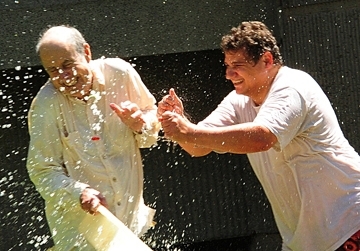
- "Insect Gut--Pathogen Molecular Interactions" by Bryony C. Bonning, University of Florida
- "A New Assay to Screen for the Inhibitory Capacity of Air Pollutant Components on Antioxidant Enzyme Activities" by Norbert Stainer, Arthur Cho and Ralph Delfino, UC Irvine and UCLA
- "From Steriod to Non-Steroid: Discovery of Nonsteroidal Brassinolide-Like Compound" by Yoshiaki Nakagawa, Kyoto University, Japan
And then there was this poster: "Health Benefits of Water Balloon Fights."
Yes, you read that right: "Health Benefits of Water Balloon Battles." It was the brainchild of researcher Christophe Morisseau of the Hammock lab, who added humor to the weekend-long reunion that drew 100 laboratory alumni from 10 countries: former graduate students, postdoctoral fellows, collaborators, colleagues and other researchers. They gathered to honor their mentor and reminiscence. They know Bruce Hammock as a UC Davis distinguished professor who holds a joint appointment with the Department of Entomology and Nematology and the Comprehensive Cancer Center, and who directs the National Institute of Environmental Health Sciences (NIEHS)-UC Davis Superfund Research Program. They know him as "a genius" with 50-year expertise in chemistry, toxicology, biochemistry and entomology who seeks to alleviate pain in human and companion animals. (See news story). They also know him as a fellow who likes to have fun.
Fun? Hammock and Morisseau, aka "The Splash Brothers," launched the annual Bruce Hammock Water Balloon Battle, aka "Bruce's Big Balloon Battle at Briggs" and "Fifteen Minutes of Aim," 16 years ago. This year's event takes place at 3 p.m., Friday, July 12 on the northwest lawn of Briggs Hall on Kleiber Hall Drive. First (starting at 1 p.m.), the water warriors fill 2000 balloons. Then, at Morisseau's signal, the "15 Minutes of Aim" begins. When they diminish and deplete the water balloon supply, they empty tubs of water on unsuspecting lab mates. Other labs join in the fun, as do bystanders.
But back to the creative water balloon poster.
Morisseau, tongue in cheek (and probably balloon in hand and prospective target in eyesight), extolled the virtues of Water Balloon Fights, aka WBF, on his poster:
Hypothesis: Work is very stressful, and stress is known to affect health and happiness, thus leading to a short and sad life. We hypothesize that a little fun at work can bring a lot of goodness to the lab microcosm.
Methods: Get some people, as shown on the made-up graph at right: more people more fun, but optimal in the 30-50 ranges.
Fill the balloons. This is a group activity for team-building purpose.
Divide the people into fair and equal groups: the bosses against the rest of the crew.
Devise advance tactical and strategical battle plan: Let's get everybody wet.
Results: A lab without WBF yields infightings and conflicts, as well as sick-looking dudes. A lab with WBF yields to harmony at the workplace with healthy food practices and buffed guys.
Conclusions: Water balloon fights provide team building efforts, stress relief and healthy exercise. We recommend that any workplace establish water balloon fights on a yearly or twice yearly basis.
Morisseau illustrated his poster with contrived before-and-after photos of Hammock: before: a scrawny scientist and after, a buffed-up athlete. The poster now hangs outside their offices in Briggs Hall.
Disclaimer: Professor Hammock is known for his athleticism--from hiking mountains to kayaking. And the Hammock lab is known for its strong camaraderie. Indeed, not many scientists can draw 100 of their lab alumni from all over the world to a reunion!
